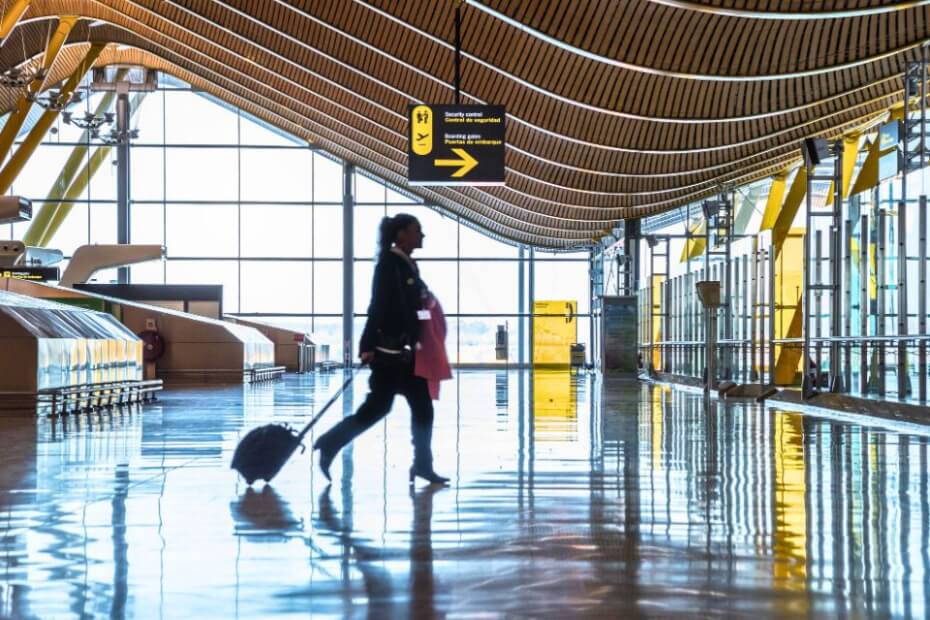
Starting in 2024, some travelers will have the option to go through the United States (US) airport security checkpoints independently.
The US Transportation Security Administration (TSA) is set to test a new “self-service” screening technology. The trial will start in January 2024 at Las Vegas Harry Reid International Airport.
Self-screening aims to enhance efficiency at security checkpoints and reduce wait times. It also seeks to maintain a stable number of TSA employees as air travel numbers increase.
“Like self-ordering kiosks at fast food and sit-down restaurants, self-service screening allows passengers in the Trusted Traveler Program to complete the security screening process on their own,” said Screening at Speed Program Manager Dr. John Fortune via a press release.
The self-screening inspections will be available to TSA PreCheck members, allowing them to perform their own body scans.
TSA Precheck is a US government program that allows low-risk airline passengers to enjoy an expedited security screening process at US airports. It started in 2013 and currently has over 10 million active participants.
Travelers using the self-service option are expected to move through the screening process more quickly, with minimal assistance from TSA officers (TSOs).
Fortune further explained, “Travelers will use passenger and carry-on screening systems at individual consoles or screening lanes themselves, reducing the number of pat-downs and bag inspections TSOs need to perform and freeing their time to be reallocated to the busier aspects of screening operations.”
Self-screening would not replace current security screenings but could reduce wait times and workload for TSA personnel.
How the TSA PreCheck self-screening works
The logistics company Vanderlande, known for developing automated luggage scanners, designed the self-screening concept that will debut at the Las Vegas airport in January.
After placing personal items through the automated scanner, passengers will encounter four separate stations with individual body screening portals.
Each portal features automatic entry and exit doors. When it’s a traveler’s turn to be screened, they step into the portal, and the entry doors close automatically.
A video screen guides passengers through each step. This includes assuming the correct stance with arms overhead, similar to the body scanners in the regular security line. Passengers then undergo a millimeter wave scan.
If they fail the body scan, perhaps due to an item left in a pocket, the video screen highlights the area for item removal. Entry doors reopen, allowing passengers to remove the item and step back in.
Once successfully screened, travelers proceed through the exit doors to retrieve their bags and continue into the terminal.
Other designs for self-screening checks
The TSA is currently testing three other distinct self-service design prototypes, each with slightly different steps for travelers.
The company Micro-X has designed two different solutions for self-screening checks of passengers.
The first one consists of individual screening consoles that are pod-based. These consoles include a compact carry-on screening system and a flat panel passenger screening capability.
The second solution is a small Computed Tomography (CT) X-ray system designed for a compact carry-on and personal self-screening.
Another design, this time by Voxel Radar, features “in-motion” screening panels. The panels will scan passengers in real-time as they place their carry-on bags on the checkpoint conveyor belt.
Various prototype parts of the self-screening systems have already been tested at Ronald Reagan Washington National Airport and in Atlantic City.
Contactless travel and digital systems
Many countries worldwide are upgrading and digitizing their systems to provide travelers with a more seamless travel experience.
Airports worldwide are implementing biometrics for a faster and more efficient travel experience. The United Kingdom (UK) already uses electronic passport gates (eGates) at some entry points.
Frankfurt Airport in Germany, Dubai Airport, and Singapore’s Changi Airport are using or set to use biometrics, such as fingerprints and facial scans, for automated authentication and contactless travel.
The UK and the European Union (EU) are also digitizing visa and immigration processes. The UK is transitioning to an electronic record or eVisa. At the same time, the EU’s Schengen visa application will soon be done online. Conversely, the EU is set to roll out its biometric border control Entry/Exit System (EES).
Both the UK and the EU are streamlining the immigration process for pre-verified, low-risk travelers with the UK Electronic Travel Authorization (ETA) and the EU’s European Information and Travel Authorization System (ETIAS).

